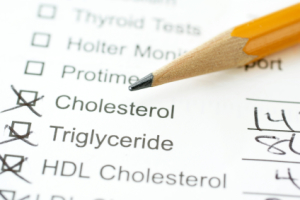What’s in this section?
Click any of the links below to jump to the section you are most interested in, or simply continue scrolling to learn more about TRT:
- TRT vs HRT: What’s the difference?
- Creams and Patches: Not the most practical or reliable.
- TRT vs Performance Supplementation: Common misconceptions in online TRT forums.
- The Importance of Lab Work for TRT: Monitor your health, not your levels.
- Being “shut down” on TRT: What does this mean?
- Sperm count and Fertility: Should you start TRT if you want to be a father?
- TRT, Sex Drive, and Erectile Dysfunction
- TRT and Sleep: An unexpected benefit of TRT.
- TRT and Diet: A healthy diet is more important than ever.
- TRT Injection Training: Self injecting is simple and safe if you know the proper technique.
- Schedule a TRT Consultation
- Read the 14-week testimonial of a 37 year old man on TRT.
TRT vs HRT: What’s the difference?
 Testosterone Replacement Therapy (TRT) is the simplest form of Hormone Replacement Therapy (HRT) because it only involves one hormone… testosterone. HRT programs modulate several chemical pathways including HGH (human growth hormone), estrogen, insulin, thyroid, etc, and because of this, the programs can become very complex very quickly. Each of these physiologic pathway has hundred of chemical compounds involved at various stages, so attempting to modulate several of these at the same time can be a daunting task.
Testosterone Replacement Therapy (TRT) is the simplest form of Hormone Replacement Therapy (HRT) because it only involves one hormone… testosterone. HRT programs modulate several chemical pathways including HGH (human growth hormone), estrogen, insulin, thyroid, etc, and because of this, the programs can become very complex very quickly. Each of these physiologic pathway has hundred of chemical compounds involved at various stages, so attempting to modulate several of these at the same time can be a daunting task.
Fortunately, we rarely find it necessary to move from TRT to HRT because a well-managed TRT program has such a high success rate. On occasion, TRT alone will not produce as dramatic of a result as a particular individual might hope for, so in those cases the program may be extended to HRT with human growth hormone added to the regimen. Cases such as this are more common on older men and performance athletes, but the vast majority of men aged 35-55 will do very well with testosterone alone, which keeps the program simple and sustainable long term, and minimizes the disruption of your natural chemical pathways.
If you imagine two very large and complex assembly lines sitting next to each other in a warehouse… each line starts with an enormously complex manufacturing device at the beginning (so complex that all you can do to control it is switch it on or off)… the manufacturing device spits out the product (one makes testosterone and the other makes growth hormone)… the products travel down their respective conveyor belts to be deposited in large bins at the end… when the bins get too full, the devices shut off automatically, and when they empty out because the product is being used, they turn back on. These assembly lines are also sitting right next to each other, so when one bin gets too full, sometimes the product spills into the neighboring bin, which causes some confusion for the other line, and for whomever is “using” the products in the bins.
This is how your physiologic pathways for testosterone and growth hormone work, and the only thing you have reliable control over is depositing more “product” in each bin with your dosages. What happens after that product is deposited is up to the system. You can send signals to it with other compounds like HCG, Arimidex, Clomid, etc etc, but it’s still going to do what is was designed to do, just in a more unpredictable way and a more unpredictable pace. You can imagine that depositing a single product on a predictable schedule is the easiest and most reliable way to manage these assembly lines and keep them functioning they they are supposed to. The more products you add, and the more on/off signals you send, the more confused the machinery will get. Their production times won’t match for very long, the products will start spilling over into the opposite bins changing the on/off schedules, and no one at the end of the line is going to be able to figure out what product is in what bin.
This is not to say that there is no role for HRT, because there certainly is. But jumping directly into HRT without first establishing a baseline level of success with it’s simplest form, TRT, can lead to nothing more than a confusing, difficult to manage, program that isn’t sustainable, and possibly dangerous since in reality the actual physiologic processes represented in this analogy are far more complex than the analogy suggests.
Creams and Patches: Not the most practical or reliable.
We rely more on injections in our TRT program because of the simplicity and predictability of the results. Creams are messy, some have an odor, and are far too variable in how much product they deliver to your subcutaneous tissue. Patches removed the messy component, but they are also quite unpredictable on the levels they can deliver, and they are more difficult to make fine dosage adjustments to than either creams or injections. In addition, patches are a visual giveaway to have the treatment, especially in a man where a patch is not an expected thing to see as it may be with a woman using a birth control patch. Both patches and creams could be delivering too much or too little product at any given time depending on a variety of factors that you have very little control over. This compares quite unfavorably to the predictable, simple, once-a-week administration of testosterone through the injection route, and this predictability allows you to get results faster and more reliably so you can forget about the routine of TRT and get on with your life.
Are you considering testosterone replacement therapy? We offer several of today’s latest treatments. Please feel free to contact usonline or call our office at 917-703-7069.
TRT vs Performance Supplementation: Common misconceptions in online TRT forums.
This is an incredibly important topic to understand because the lines between these two fields are becoming blurred nowadays with performance athletes referring to their supplementation programs as “TRT”, and claiming that they are supplementing because they have “low T”. The expectation of an athlete or a bodybuilder is very different from a man who just wants to feel young again, and the number of meds and dosages required to achieve these different goals is as drastically different as you might imagine.
The problem here lies in the fact that one of the most popular sources for information on TRT and hormone supplementation is the collection of online forums, most of which are hosted and moderated by athletes and bodybuilders. Many times this population presents itself as an authority on TRT or HRT, when in fact their advice is geared towards the performance world. Supplementation for performance requires significantly higher doses, which leads to a constant vigilance in recognizing side effects that are inevitable at such high doses. Performance regimens often become very complicated very quickly because it’s necessary to manage the side effects, and this can be quite confusing to men who are genuinely interested in TRT, not performance athletics.
This would not be an issue if the performance crowd clearly differentiate themselves on these forums, but they usually do not. They have no qualms offering up advice to non-athletes, and have even been known to ridicule men who question their complex protocols.
The biggest difference between true TRT, and “performance TRT”, is the expectation on side effect. The supra physiologic doses of performance TRT will inevitably lead to side effects and health issues in the long term, and this is an
The Importance of Lab Work for TRT: Monitor your health, not your levels.
 Blood tests are critically importance to effectively monitoring a TRT program, but not always for the reasons you may think. It’s a common misconception that blood levels of testosterone need to be checked more than 3-4 times per year once you are on a stable regimen with no dosing adjustments required. Of course levels are checked more frequently than that during the initial stages, but once the dosages are stable, blood work is no longer meant for testosterone levels… it’s meant to monitor the other systems in the body that may be affected by exogenous testosterone.
Blood tests are critically importance to effectively monitoring a TRT program, but not always for the reasons you may think. It’s a common misconception that blood levels of testosterone need to be checked more than 3-4 times per year once you are on a stable regimen with no dosing adjustments required. Of course levels are checked more frequently than that during the initial stages, but once the dosages are stable, blood work is no longer meant for testosterone levels… it’s meant to monitor the other systems in the body that may be affected by exogenous testosterone.
The most important lab tests on a long term TRT program are for cholesterol (hypercholesterolemia), liver enzymes (LFT’s), and hemoglobin (polycythemia or high blood count). Unchecked high cholesterol and high hemoglobin levels can predispose you to clogged arteries (atherosclerosis), which can lead to heart attacks, strokes, and other serious conditions if not regulated properly. High blood pressure (hypertension) is another potential problem associated with long term TRT, and while this isn’t a lab test, it is important that it be checked by a medical professional several times a year in addition to the blood work.
You will often read about men who have their “levels” checked multiple times a month, or every time they feel their energy decline a bit, or when they feel slightly depressed. Very often this is unnecessary, and will lead to nothing more than an unnecessary dosage adjustment that never needed to be made. Blood work is quite a valuable tool in the early stages of TRT, but once a stable regimen is in place, it’s more about monitoring the other systems in the body, and less about testosterone.
Being “shut down” on TRT: What does this mean?
The concept of being “shut down” while on TRT is an important one, and is a common source of confusion about whether or not there is a way to avoid being shut down while on TRT.
The short story here is that everyone who is on TRT is shut down, regardless of what medication cocktail they are using. It’s true that HCG (and some other medications) can stimulate your testes to produce some of their own testosterone, but that does not mean that you are producing itspontaneously as you were before you started TRT. The exogenous HCG is required for that testosterone to be produced, and if it is taken away, the production will stop (at least for a while).
In fact, you could consider yourself “shut down” or “shutting down” as soon your natural testosterone production declines to a point where it affects you enough to consider TRT. Taking HCG provides a further stimulus to a system that has already decided that it is time for it to begin shutting down, so stimulating a shut down system does not change the fact that it is still shut down. A system that is not shut down produces testosterone in response to a natural signal it receives from the body, while a system that is shut down requires an exogenous (external) signal to start it’s production.
The key concept here is not whether you are shut down or not… the key is whether you are maintaining the “machinery” in a way that maintains the possibility that it might be able to function on it’s own in the future. This is somewhat of a moot point for most men on TRT because going off exogenous therapy will (at best) lead to a return to pre-TRT testosterone levels, which were not adequate to begin with. Because of this, TRT is a lifelong therapy for the vast majority of men who start.
That being said, there are two main reasons to maintain the machinery regardless of whether or not you intend TRT to be a lifelong treatment:
1. The testes produce more than just testosterone. There are a variety of other chemical compounds produced by the testes that are involved in maintaining hormonal homeostasis, and that are essential not only for proper hormone production, but also for proper metabolism in many other body systems like the cholesterol pathways.
2. If you fail to simulate an already sluggishly producing set of testes while you administer exogenous testosterone, you will only serve to completely remove any natural signals for the testes to produce any of these other compounds. This will make it incredibly difficult to establish or maintain a true homeostatic state, and your results while on TRT will always feel a bit unnatural.
Are you considering testosterone replacement therapy? We offer several of today’s latest treatments. Please feel free to contact usonline or call our office at 917-703-7069.
m
Sperm count and Fertility: Should you start TRT if you want to be a father?
If you have plans for fathering a child, you must be careful about your decision to start TRT. Exogenous testosterone will invariably produce a drop in sperm counts and making conception more difficult, and while you can find plenty of success stories of men who were able to conceive while on TRT, this would be the exception rather than the rule. It is true that the addition of HCG to your regimen maintains at least some natural testicular function, but this effect is variable and should never be considered as a way to guarantee fertility while on TRT. If this is a serious concern for you. the best thing to do is schedule a consultation with a professional and go from there.
TRT, Sex Drive, and Erectile Dysfunction
 Erectile dysfunction and “low T” are so commonly (but mistakenly) related to each other that you can easily find men posting to popular low T forums about how they make adjustments to their dosage regimen and order blood levels based solely on the quality of their erections. Most men who are on TRT would be most adequately described as “benefitting from testosterone supplementation” rather than being diagnosed with low testosterone. As described previously on this site, the vast majority of men who present with true physiologic disturbances in testosterone production are children, or perhaps the occasional adult with an anatomic cause such as a testicular or pituitary gland tumor. Nearly all men considering TRT have a blood level of testosterone that is in the normal range, and even a value that falls on the low end of the normal range is still normal. They key here is that we should not be trying to determine of you have a physiologic deficiency in testosterone production, but instead trying to determine whether your natural production has declined enough to make it likely that you’ll benefit from exogenous testosterone supplementation. The term “low T” within the realm of TRT is often used incorrectly as a medical diagnosis, when in reality it is a natural process, not a physiologic condition or abnormality.
Erectile dysfunction and “low T” are so commonly (but mistakenly) related to each other that you can easily find men posting to popular low T forums about how they make adjustments to their dosage regimen and order blood levels based solely on the quality of their erections. Most men who are on TRT would be most adequately described as “benefitting from testosterone supplementation” rather than being diagnosed with low testosterone. As described previously on this site, the vast majority of men who present with true physiologic disturbances in testosterone production are children, or perhaps the occasional adult with an anatomic cause such as a testicular or pituitary gland tumor. Nearly all men considering TRT have a blood level of testosterone that is in the normal range, and even a value that falls on the low end of the normal range is still normal. They key here is that we should not be trying to determine of you have a physiologic deficiency in testosterone production, but instead trying to determine whether your natural production has declined enough to make it likely that you’ll benefit from exogenous testosterone supplementation. The term “low T” within the realm of TRT is often used incorrectly as a medical diagnosis, when in reality it is a natural process, not a physiologic condition or abnormality.
The same holds true for erectile dysfunction, which explains why it is so commonly involved in online discussions related to TRT. True erectile dysfunction is a complete (or near complete) inability to achieve an erection because of inadequate blood flow to the penis that is usually caused by thickening, hardening, or clogging of the arteries in that region. This situation is most common in older men who have coronary artery disease and atherosclerosis, and in an occasional younger male cyclists who sustain years of repetitive trauma to the perineum on frequent long distance bike rides. Outside of those circumstances, most men who have difficulty achieving erections to do not have physiologic erectile dysfunction. The inability to achieve an erection can be related to an enormous list of factors including stress, depression, anxiety, relationship issues, being overweight, medication side effects, etc etc etc. And while it is usually true that TRT will improve the quality of your erections, it is not a cure for true physiologic erectile dysfunction, and low testosterone levels are very rarely the sole cause for difficulties achieving an erection.
TRT and Sleep: An unexpected benefit of TRT.
One of the most underrated, but extremely helpful, benefits of a sound TRT program is an improvement in the quality of sleep. Depression, anxiety, and a lack of motivation can make it nearly impossible to get a good night’s sleep, and a lack of rest will inevitably lead to a vicious cycle of increasing anxiety and depression that make sleep even more difficult.
TRT and Diet: A healthy diet is more important than ever.
Modifying your diet while on TRT is extremely important, but not commonly discussed. The most serious side effect of exogenous testosterone administration is elevated cholesterol levels, which, if left unchecked for extended periods of time, can put you at high risk for atherosclerosis leading to heart attacks, strokes, blood clots, kidney disease, blindness, and true erectile dysfunction. Consequences like this are extremely rare from a properly managed TRT program, but the importance of a healthy, low cholesterol diet still cannot be understated.
TRT Injection Training: Self injecting is simple and safe if you know the proper technique.
Check back for an injection training video that’s coming soon…
Read the 14-week testimonial from a 37 year old man who recently started TRT
Please click here
Schedule a TRT Consultation
Schedule A TRT ConsultationTo schedule a one-hour personal consultation, please contact us online or give Manhattan Aesthetic Surgery a call at 917-703-7069 to schedule a visit. You may find it beneficial to have a routine set of lab tests done before your consultation so the doctor can speak specifically about your physiology, but this is not a requirement. If you are interested in having lab work done before your consultation, simply ask your primary care doctor to order a set of tests that include the following: CBC (Complete Blood Count), CMP (Complete Metabolic Panel), LFT’s (Liver Function Tests), Cholesterol Panel, Free Testosterone Level, Thyroid Function Tests, and LH/FSH Levels. If you prefer to wait until after your consultation, we can easily give you a prescription for these studies.

